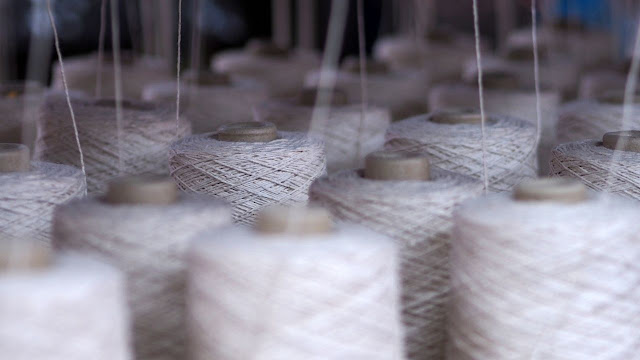Textile Industry in Vietnam
Vietnam textile industry for many years has always been one of the major export sectors of Vietnam. With the development in technology, the number of skilled worker is growing along with many preferential policies from the Government, the textile industry has obtained encouraging results, creating the value of goods, ensuring domestic demand and export.
1.Overview of the industry
According to the General Department of Customs, in 2014, the value of exports textiles reached 20.91 billion dollars, increasing 16.6% compared to 2013. The value of textile exported was the second largest export industry in Vietnam.
Vietnam’s textile industry has a high production capacity: 4,424 enterprises (as of 31/12/2013) with 2.5 million workers, growth rate of 14% annually. There are 1.2% of enterprises reaching $100 million export revenue, 3.25% of them reaching 50 million and 30% reaching over $1 million. There been several textile products including 8000 tons of cotton fiber, yarn 900 thousand tons, 1.5 billion m2 fabric. Localization ratio of the whole industry was 50% in 2014.
Export capacity of the textile industry is also very impressive. Particularly in 2014, the export value reached 20.91 billion US dollars, accounting for nearly 14% of total turnover exporting ones in the country – No. 1 export industry of Vietnam until 2012, No. 2 in 2013 onwards (after the mobile phone). Vietnam is the 4th largest exporting country, accounting for 4.92% of global textile exports in 2014, after China, Bangladesh, Italy.
Vietnam’s textile sector has yet to master generating raw material. The high-quality raw material required depends heavily on importing (around 60-70%). Mainly imported raw materials are from China, Taiwan and Korea. Vietnam’s textile industry has currently imported 90% of raw cotton, 100% synthetic fibre and 80% cotton fabric.
According to research by the Ministry of Labour, every $1 billion of Vietnam textile export created extra 250,000 jobs. Currently, Vietnam has a population of over 90 million people which 49% of the population of working age worked in the textile industry. Moreover, the labour cost in Vietnam is relatively low compared to many countries in the region. The advantage of the lower labour cost will resulted in lower production cost, thus being price competitive. However, in this sector, there is a shortage of skilled labour leading to difficulties to develop the industry.
2.Opportunities for textile industry
TPP is a great opportunity for many industries including textile. According to economic experts, TPP will have a huge influence in the global textile industry. TPP opens investment opportunities (FDI) into developing materials and supporting industries. When joining the TPP, textile tax rate reduced to 0% which indicates a huge profits for Vietnam’s textile sector.
Besides, FTAs (The free trade agreements) also opens up further export opportunities for Vietnam’s textile industry to the market European Union, Korea, Asian Economic Union – Europe … Vietnam will benefit from free tariff agreement from EU . Besides, the Vietnamese enterprises will be supported in terms of access to high technology from other countries, thus enhancing value of products.
3.Challenges
Other than opportunities, the textile industry will be facing many challenges. The domestic textile enterprises are mainly operating in small and medium scale with low capital investment and financial resources, limited technology, equipment and innovation capabilities. This lead to inability to achieve economic efficiency and compete with other countries. After all trade agreements take effect, Vietnam’s textile industry must meet strict rules and requirements such as origination of raw material (fabric). Meanwhile, most of raw materials (fabrics) was imported from other countries such as China (not a member of TPP). Therefore, if Vietnamese enterprises do not use raw materials from Vietnam or other countries in the TPP, it will be difficult for them to enjoy free tariff when exporting to the US and other countries in the TPP. Therefore, Vietnamese enterprises are highly recommended to learn about TPP and other free trade agreements. Besides, Vietnamese enterprises should prepare for qualified workforce, equipment and new technologies and intellectual property. The state and agencies functions have created specific guidance on the provisions of the tax, customs to help Vietnamese enterprises to utilise export opportunities with the advantages of tariff.
Finding the right business partner in Vietnam is also important. We recommend doing research on the reputation of the company and individual shareholders, corporate or individual, gathering publicly available company information, and performing background checks on key personnel to find potential risks in cooperation. Working with a reliable partner can help achieve economic benefits, saving time and money in business.

.jpg)

Nhận xét
Đăng nhận xét